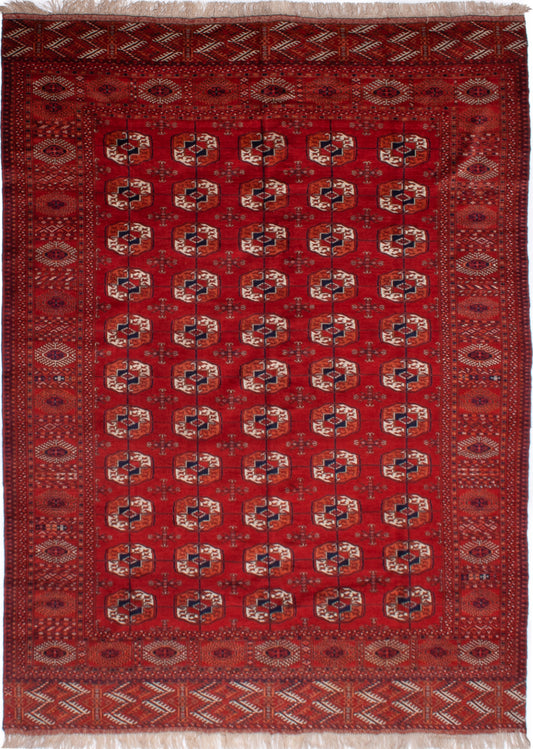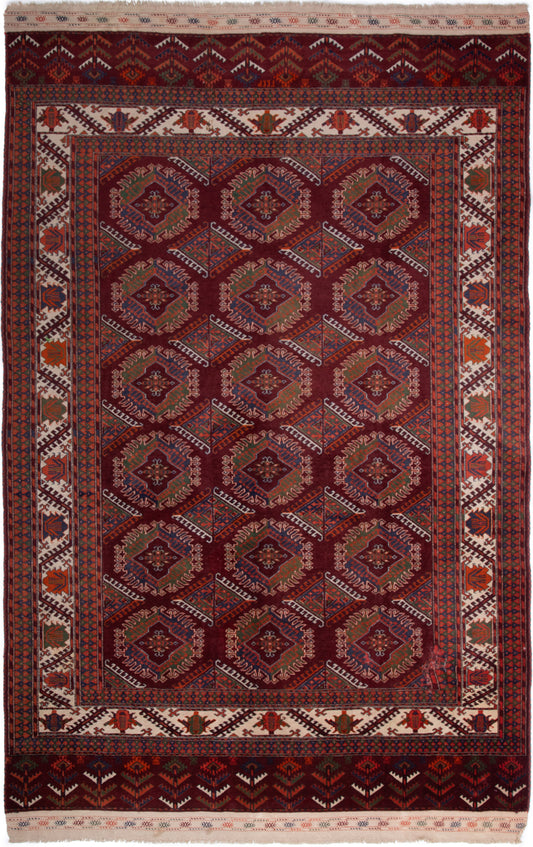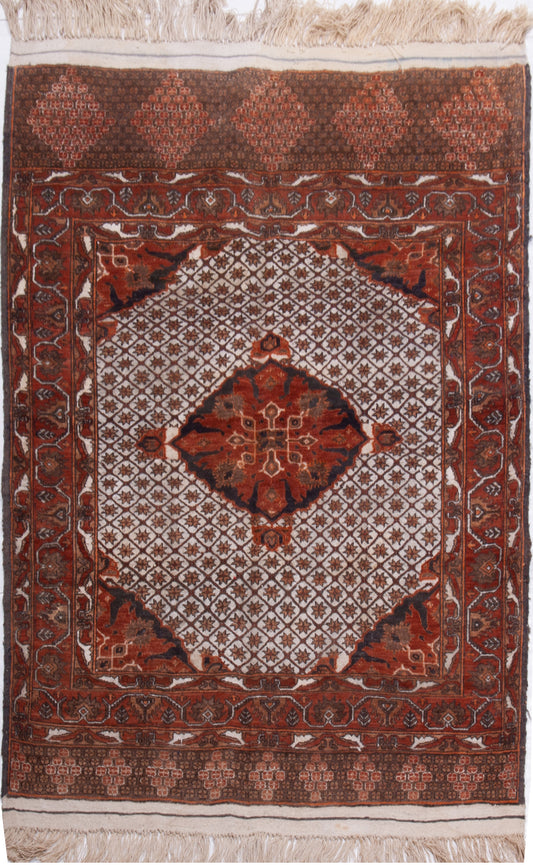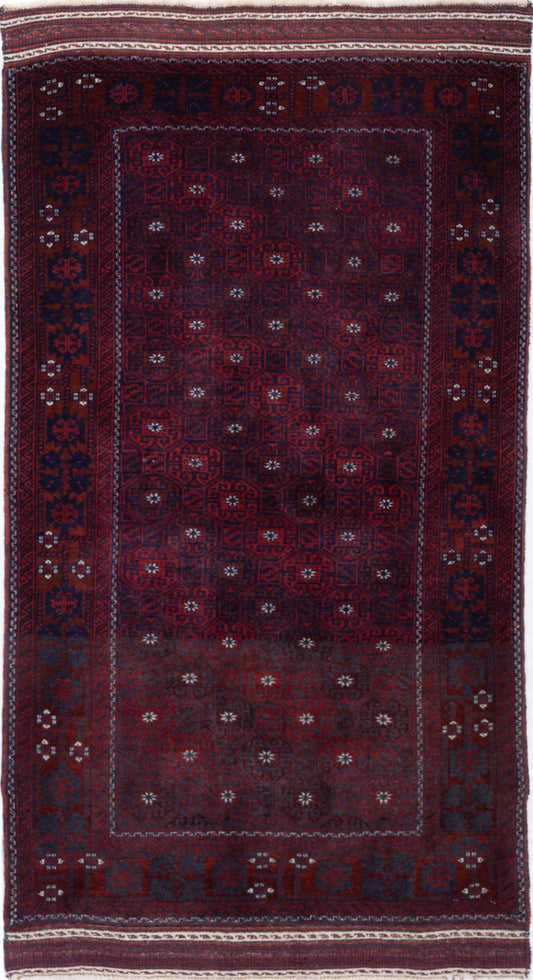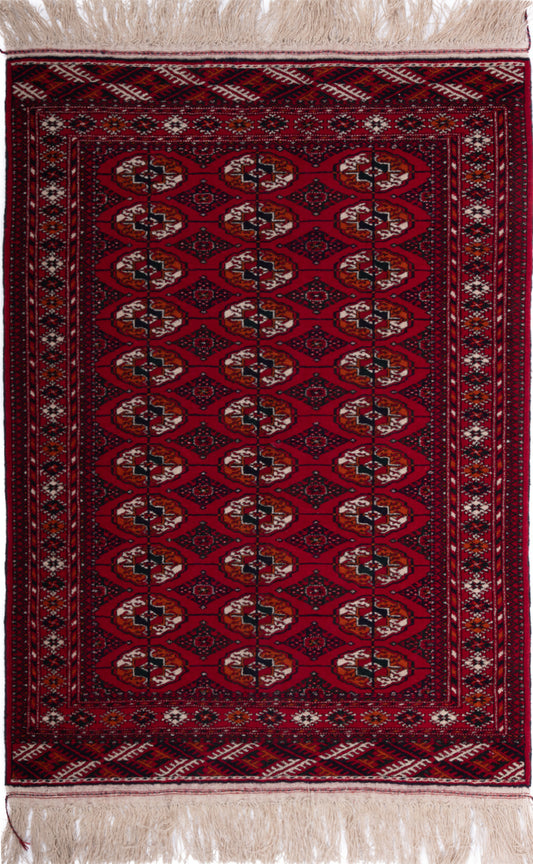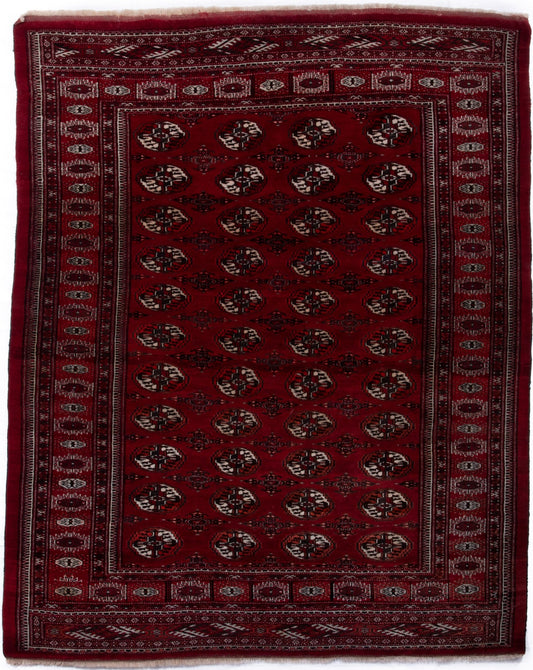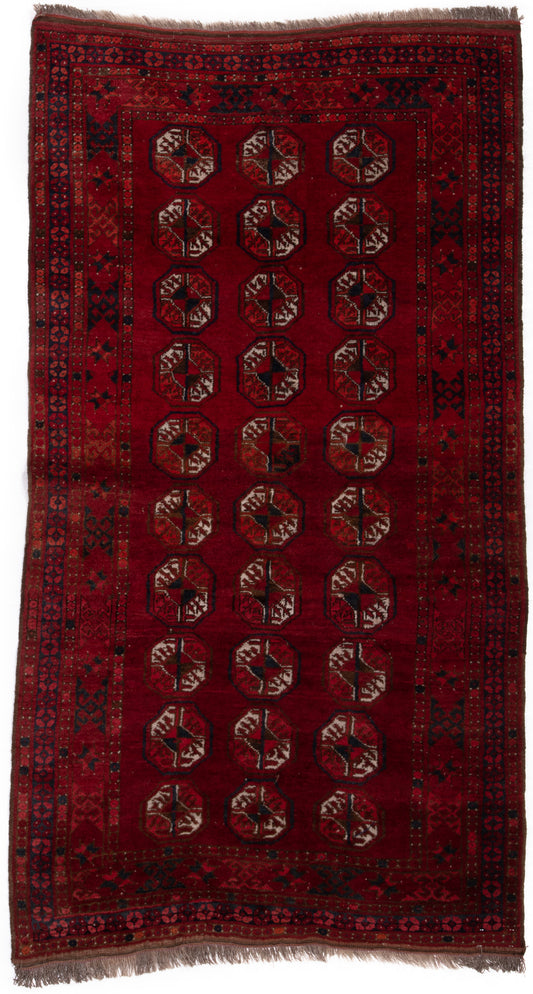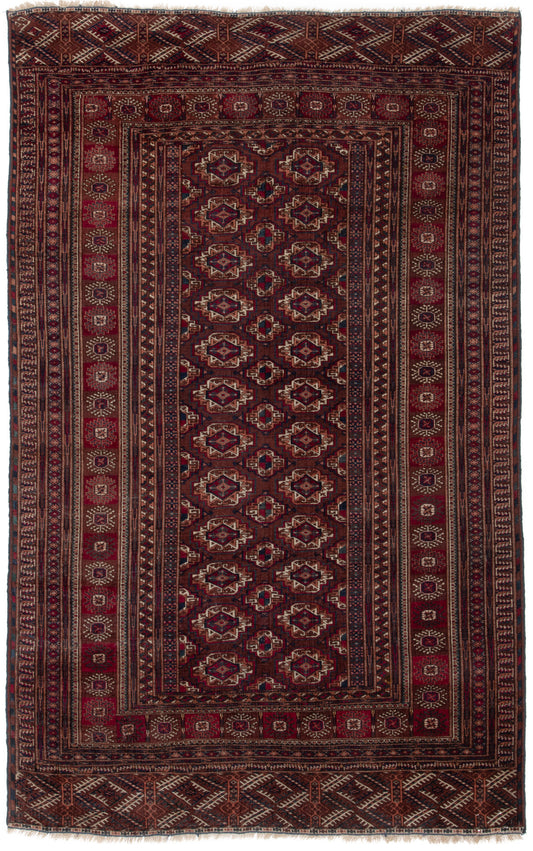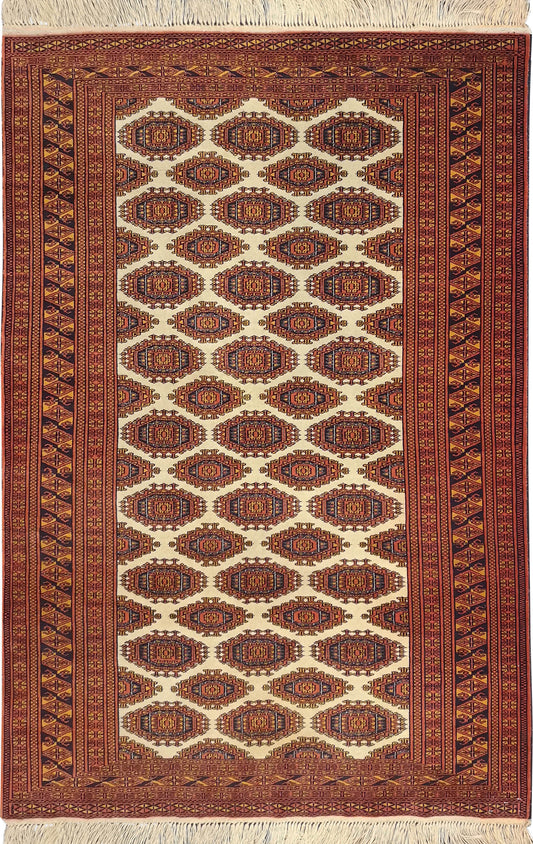Turkmen Rug History & Origin Guide
Introduction to Turkmen Rugs
Turkmen rugs, also known as Turkoman, Turkomen, or Turkman rugs, are a testament to the rich cultural heritage and craftsmanship of the nomadic Turkmen tribes from Central Asia (today mainly Iran and Afghanistan). Hand-knotted with intricate geometric patterns and distinctive colours, these rugs are highly valued for their striking appearance and exceptional quality. Embodying centuries of traditional artistry, Turkmen rugs make a unique and captivating addition to any home décor.
History of Turkmen Rugs
The history of Turkmen rugs dates back to the 5th century AD, with the earliest known examples coming from the Sogdian period. These rugs were originally woven by the nomadic tribes of Turkmenistan, Uzbekistan, and northern Afghanistan, who used them as floor coverings, tent decorations, and saddlebags. Over time, the art of weaving spread throughout the region, resulting in a diverse range of styles and techniques that can be seen in Turkmen rugs today.
Designs and Patterns
Turkmen rugs are known for their highly detailed, geometric patterns, often featuring a combination of stylized floral and tribal motifs. The most distinctive feature of these rugs is the 'gul' – a repeated medallion-like design that varies in shape and size depending on the tribe that created the rug. The borders of Turkmen rugs typically consist of multiple bands, each adorned with intricate geometric or floral patterns that complement the central design.
Materials and Colours
Traditionally, Turkmen rugs are made from hand-spun wool, with the finest examples featuring a blend of local and imported wools. The wool is dyed using natural pigments extracted from plants and minerals, resulting in a rich and vibrant colour palette that includes deep reds, blues, and warm earth tones. In addition to wool, some Turkmen rugs also incorporate silk or cotton to create subtle variations in texture and sheen.
Weaving Techniques
Turkmen rugs are crafted using traditional hand-knotting techniques, with skilled artisans meticulously tying each knot to create the intricate patterns and dense pile. The knot density of Turkmen rugs is generally high, resulting in a thick, luxurious feel and exceptional durability. The weaving process is time-consuming and labour-intensive, but the end result is a beautiful, long-lasting rug that showcases the expertise and dedication of its creators.
Subcategories of Turkmen Rugs: A Rich Tapestry of Tribal Designs
There are numerous subcategories of Turkmen rugs, each reflecting the unique artistic style of the various Turkmen tribes. Some of the most notable subcategories include Tekke, Salor, Yomut, Ersari, and Saryk. Here, we will explore the distinctive characteristics of each type of rug.
Tekke Rugs
Tekke rugs are considered among the finest examples of Turkmen craftsmanship. They are primarily produced by the Tekke tribe, who were once the most powerful and influential tribe in the region. These rugs are renowned for their high knot density, tight weave, and symmetrical patterns featuring well-defined guls. Tekke rugs often exhibit deep red tones, with highlights in blues, whites, and other earthy colours.
Salor Rugs
Salor rugs are another highly regarded subcategory of Turkmen rugs, created by the Salor tribe. Known for their intricate designs and exceptional quality, Salor rugs often feature a unique, elongated gul pattern, combined with stylized floral motifs. The colour palette of these rugs is typically rich and varied, with a strong emphasis on deep reds, blues, and greens.
Yomut Rugs
Yomut rugs are produced by the Yomut tribe, who traditionally inhabited the areas of modern-day Turkmenistan and northern Iran. These rugs are characterized by their geometric patterns, often incorporating diamond-shaped guls and intricate borders. Yomut rugs tend to have a more subdued colour palette compared to other Turkmen rugs, with earthy tones and accents of red, blue, and green.
Ersari Rugs
The Ersari tribe, once one of the largest and most powerful Turkmen tribes, is responsible for the creation of Ersari rugs. These rugs are known for their bold, geometric designs, featuring large guls and rich colour palettes. The dyes used in Ersari rugs are typically vibrant and striking, with a strong emphasis on deep reds, blues, and oranges.
Saryk Rugs
Saryk rugs are crafted by the Saryk tribe, who traditionally inhabited the areas around the Amu Darya River. Saryk rugs are known for their distinct gul patterns, often featuring a combination of geometric and stylized floral motifs. The colour palette of Saryk rugs is typically warm and earthy, with shades of red, brown, and ochre.
Each subcategory of Turkmen rugs offers its unique charm and artistry, reflecting the diverse cultural heritage of the Turkmen tribes. These exquisite rugs are not only captivating works of art but also a testament to the remarkable skill and dedication of their creators.
Tourist Attractions and Travel Information
For those interested in exploring the origins of Turkmen rugs, the region offers a wealth of cultural and historical sites to visit. Some popular tourist attractions include the ancient city of Merv in Turkmenistan, the historic centres of Bukhara and Khiva in Uzbekistan, and the UNESCO World Heritage site of the Minaret of Jam in Afghanistan.
When planning a visit to the region, it is essential to research travel requirements and safety precautions, as conditions may vary depending on the specific country and time of year.
Discover Turkmen Rugs: A Celebration of Nomadic Craftsmanship
With their intricate patterns, vibrant colours, and exceptional quality, Turkmen rugs are a captivating reflection of nomadic art and heritage. Explore the beauty and craftsmanship of these remarkable rugs, and bring a piece of Central Asian history into your home. Discover what Turkmen rugs have to offer by browsing our collection today.
Browse Our Current Selection of Turkmen Rugs
-
Persian Semi-Antique Turkmen Wool & Silk Rug
Regular price £7,045.00Regular priceUnit price per -
Semi-Antique Afghan Turkmen Runner Rug
Regular price £2,175.00Regular priceUnit price per -
Semi-Antique Afghan Turkmen Runner Rug
Regular price £2,175.00Regular priceUnit price per -
Semi-Antique Afghan Turkmen Rug
Regular price £2,895.00Regular priceUnit price per -
Semi-Antique Afghan Turkmen Wool & Silk Rug
Regular price £1,975.00Regular priceUnit price per -
Semi-Antique Persian Turkmen Rug
Regular price £425.00Regular priceUnit price per -
Persian Turkmen Rug
Regular price £645.00Regular priceUnit price per -
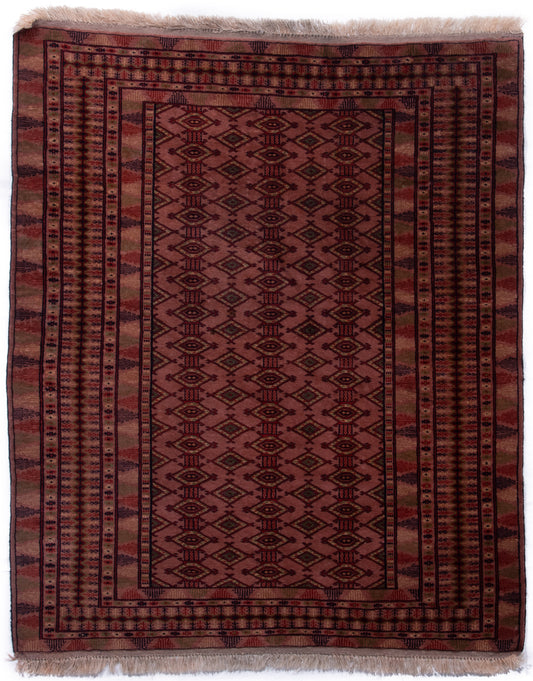 Sold
SoldPersian Turkmen Rug
Regular price £895.00Regular priceUnit price per -
Persian Turkmen Rug
Regular price £895.00Regular priceUnit price per -
Semi-Antique Afghan Turkmen Rug
Regular price £845.00Regular priceUnit price per -
Antique Afghan Turkmen Rug
Regular price £4,975.00Regular priceUnit price per -
Afghan Turkmen Rug
Regular price £1,495.00Regular priceUnit price per

